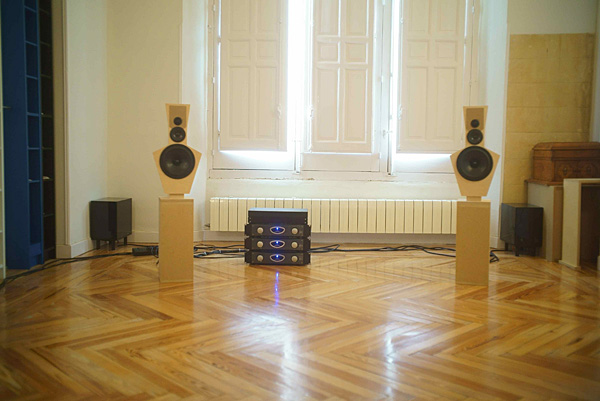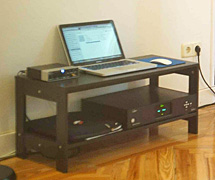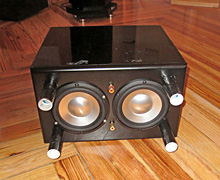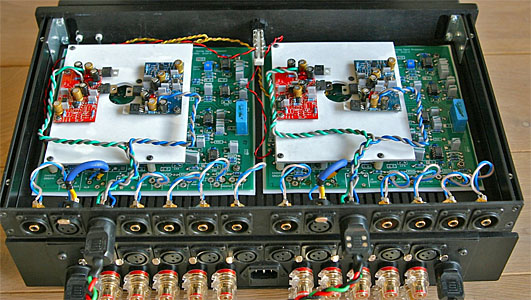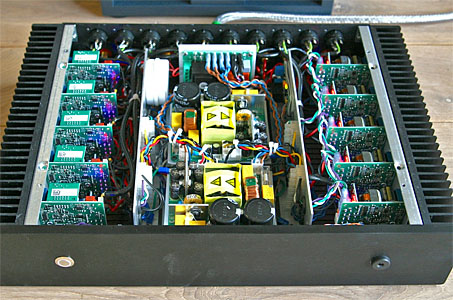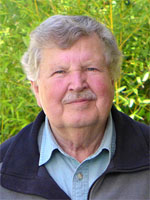| |
LX521 Photos & Comments
Construction plans have been sent to:
Australia, Austria, Belgium, Bulgaria, Canada, China, Croatia, Finland, France, Germany,
Greece, Hong Kong, Hungary, India, Italy, Japan, Korea, Latvia, Luxembourg, Malaysia, Netherlands, New Zealand, Norway, Poland, Russia, Singapore,
Slovenia, South Africa, Spain, Sri Lanka, Sweden, Switzerland, Taiwan, Thailand, UAE, UK, USA
(AR, AZ, CA, CO, CT, FL, GA, IL, KY,
MA, MD, ME, MI, MN, MO, NC, ND, NH,
NJ, NM, NV, NY, OH, OR, PA, RI, TX, UT, VA, WA, WI)
I invite you to submit photos showing how you have
set up the LX521 for work or entertainment in your room, how you have treated
the speakers cosmetically and to comment.


Dear Frank,
A promissed some pictures of my LX. Thanks to Mr.Linkwitz
and to You, that this quality of project is spread worldwide.
It was a grat pleasure to be a part of the work of Mr.
Linkwitz and a lot of fun when buiilding.
Once again thank you for your generous help with broken
subwoofers.
Best regards
Piotr J. (Poland)
*************************************************************************************************************************************************************
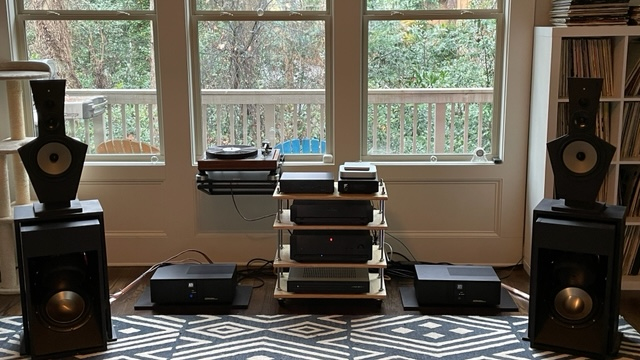
Frank,
I’ve got a longer review in mind that I want to
do on this upgrade, but I’ve been trying to describe what I’m hearing without
falling in to the trap of audio review superlatives!
This is the mid-range I lusted after that I thought only really good expensive
tubes and high-end super-expensive electrostats could deliver.
It’s the superlative midrange that this setup delivers! (22MG
and ASP V2.0)
I can hear the breath of the singers. I even heard heavy breathing from a violin player on an older Beethoven chamber
album that I’ve never heard before. It’s this lightening fast speed in the midrange that solidifys the bass.
All of the overtones are there in spades to make the recordings spring to a real life illusion.
I can hear tons of little cues in the soundstage surrounding instruments and performers.
This is much more than just acheiving a flatter frequency response curve.
Unreal! No… make that super-real! I didn’t think there was that much room for improvement in the LX521.
I was wrong! Siegfried would be very proud of what you’ve done.
Thanks! Best money I’ve spent in this hobby in a long time. Mark T. (Atlanta, GA)
**************************************************************************************************************************************************************
Hi Frank
I spoke with Don N. yesterday, and he and I were discussing how much your work on this revision has improved the sound on the LX521.
He is pretty much blown away, remarking that it’s pretty much the best sound he’s ever heard.
As you know, he had, up to now, actually favored his Orions. But this version simply ended that preference for good.....
Best
John
**************************************************************************************************************************************************************
Frank,
I’m not sure if I shared my audio history, but you may find it interesting.
These are the speakers I’ve owned:
- B&W N805 (still have them)
- B&W N802 (still have them)
- McIntosh XRT1K
- MartinLogan CLX Art with JL f113 sub
- Raidho D1 with two JL f113 v2 subs
- MBL 111f (still have them, they are the best
commercial speakers I’ve owned)
- PureAudioProject Quintet 15 with ESS AMT tweeter
and Voxativ AC 1.6 plus numerous DIY variations (still have them)
- Cube Audio Neo F10 full range driver in various
DIY configs (I’m working on a sealed translam cabinet combined with the
LX521 subs)
- Linkwitz LX521 with your amp/crossovers and
midrange
In addition, I’ve been to numerous audio shows and
have heard many of the worlds great speakers from Magico (mixed
experiences), Wilson (never loved them), Rockport (impressive), YG
(excellent), Wilson Benesch (excellent), Sonus faber (good), Gobël
(terrible), Von Schweikert (okay), Focal (okay), Avantegarde (love
them), Børresen (impressive), and many others in every style and price
range.
At this point, I would say that I prefer the LX521 system to any of the
speakers I’ve owned (I currently have no desire to rotate the MBLs back
into use and may sell them) and they rival or exceed the great speakers
I’ve had the good fortune to experience.
I keep asking myself how these speakers could possibly be this great at
their relatively low cost. The answer is obviously the brilliance of
Siegfried‘s design and the meticulous attention to every single detail
of the speaker, crossovers, amps, placement, and room. More exotic and
costly speakers can use the best drivers, crossover parts, cables, and
cabinets, and still not come close to what Siegfried accomplished
through brilliant engineering, physics, and decades of development and
commitment. I’m just sorry I never had the opportunity to meet him and
share this feedback.
Thank you Frank for carrying on the Linkwitz legacy and methodically
improving upon it!
**************************************************************************************************************************************************************

Robert , PA
LX521.4
kit from www.LINKWITZ.store with PowerBoxes
6pro NCore Master & Follower, AFI
USB from www.LINKWITZ.store
**************************************************************************************************************************************************************
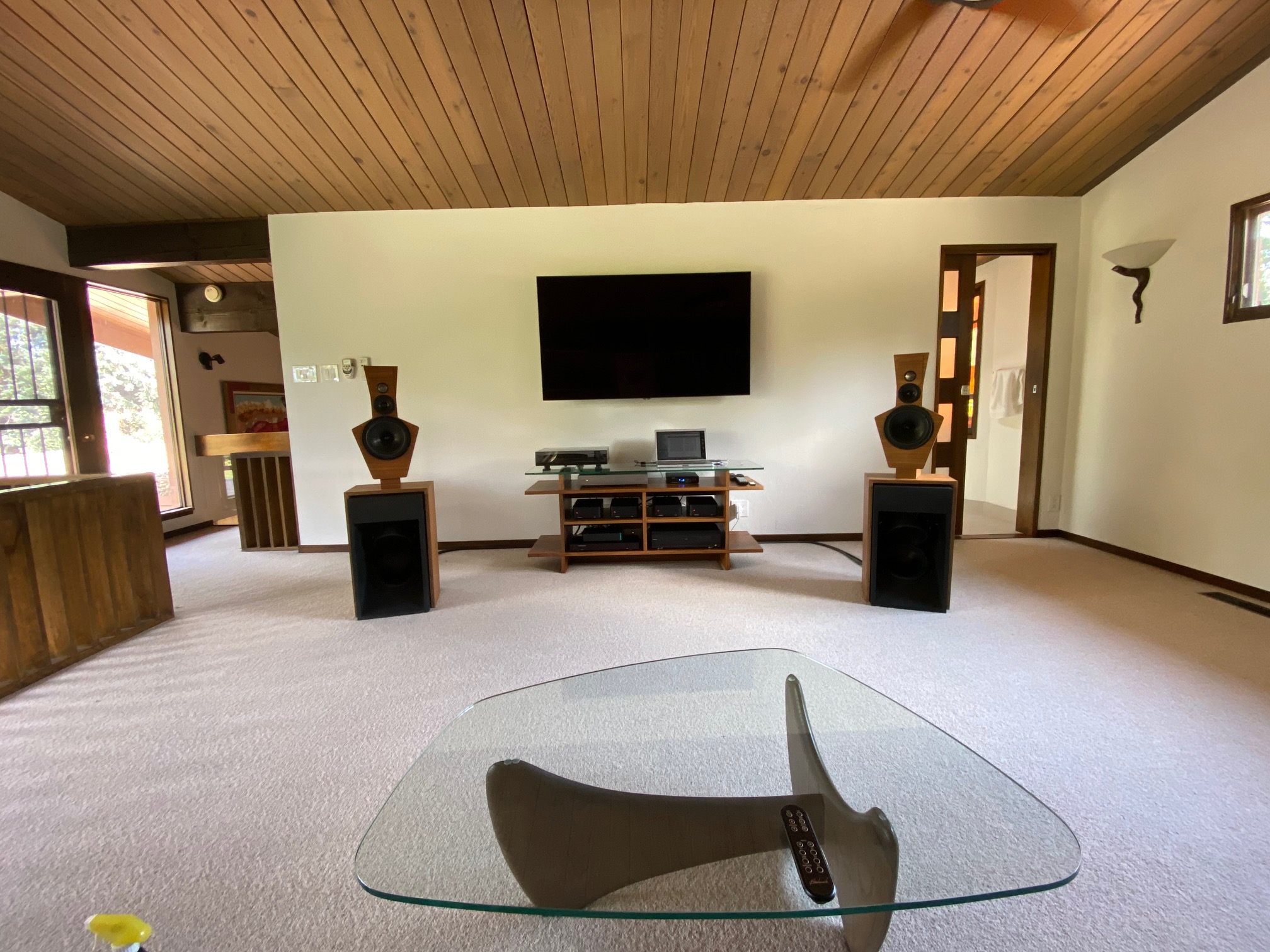
Hello Frank,
The speakers are finished and sound wonderful.
My son, an accomplished pianist and possessive of far better hearing than mine, believed them to be the most realistic sounding speakers he has heard (as the son of an Air Force major, we adhere to a policy of nearly absolute truth).
... Finally, my wife surprisingly believes them to be far more tolerable than expected...
Thank you again for your guidance and patient responses to my questions.
Jack / Colorado, LX521 American Walnut kit by www.LINKWITZ.store, electronic analog crossover: LX521.4 precision ASP by www.LINKWITZ.store
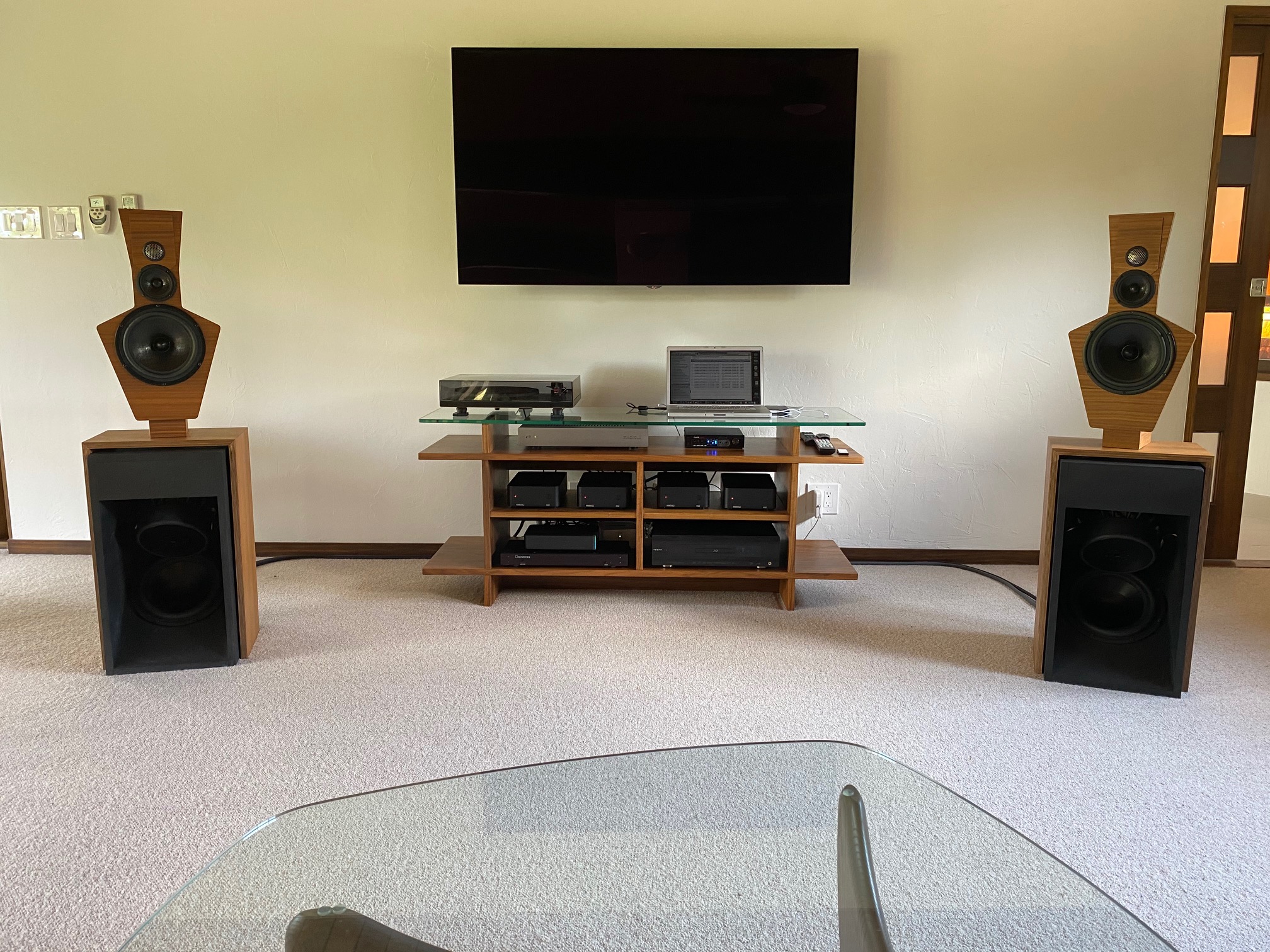
**************************************************************************************************************************************************************
**************************************************************************************************************************************************************
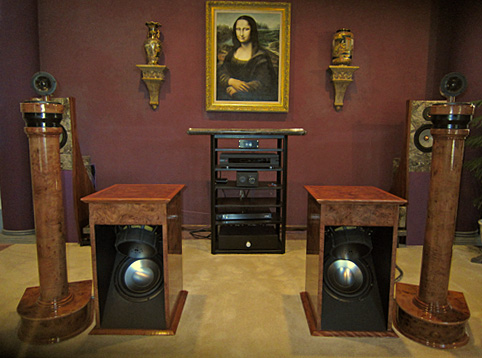 |
... As you know, the
Minis were converted to the LxStudio in July and after the initial
glitch with the plug-in, I am enjoying the system immensely. Thank you
for adding more fun to my life!
I recently posted my impressions on a new thread
on OPLUG.
Stan |
**************************************************************************************************************************************************************
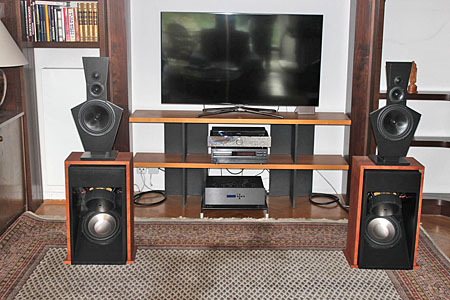 |
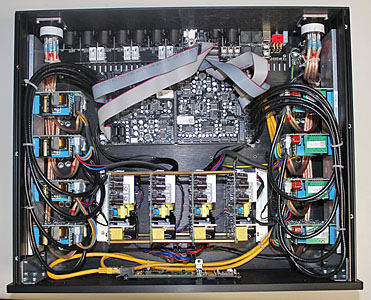 |
| Hello Siegfried,
My LX521.4 are complete and they sound just
wonderful!
Thank you for a great design!
I am attaching a few pictures for your
pursual.
Best Regards and a nice Weekend from Köln
Subhash Chavan
|
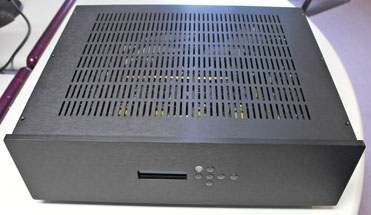 |
**************************************************************************************************************************************************************
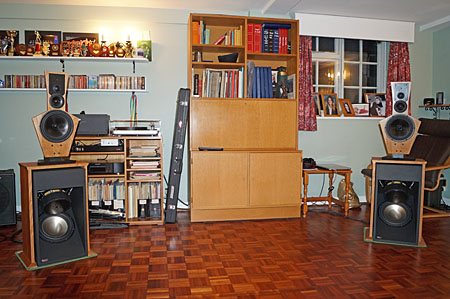 |
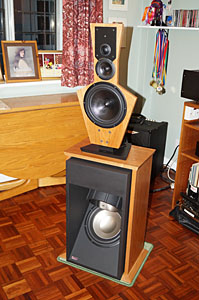 |
Dear Siegfried
Please find attached some photos of completed speakers and set-up for the
gallery. Build log at www.ashfords.me.uk
- which needs updating now with listening impressions. Thanks both for the
great design and also for the challenge in building them! – I learned a
lot in the process. As you can see I went for cherry with an oil finish,
matt black for the woofers.
They sound fantastic. I’ve had limited listening time to date and they
are still improving. Walton 1 is awesome on these speakers! |
**************************************************************************************************************************************************************
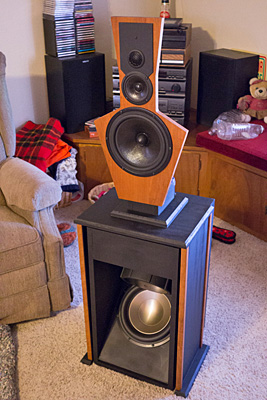 |
Mr. Linkwitz,
You and I met at ALMA's Winter Symposium two years ago
in Las Vegas. I was the young engineering student expressing interest in
just about everything. You were a little busy talking with someone but
your lovely wife encouraged me to speak with you when you were done. It
was then that I learned about your LX521 project and you very generously
invited me to your home to listen to your setup sometime later when we all
returned to California.
Well I took you up on that offer and was very glad I
did. After listening to your system and asking you all kinds of questions
I purchased plans from you. I have had to wait all this time to complete
building my set but the wait was well worth it.
I wanted to say thank you for both being so nice to me
and inviting me to your home, and also for sharing your work in the form
of the construction plans. I am very pleased with the result and look
forward to many years of enjoyment from these speakers.
Thank you sir! |
*************************************************************************************************************************************************************
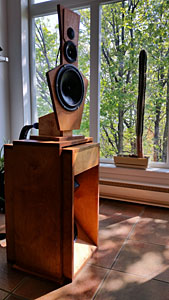
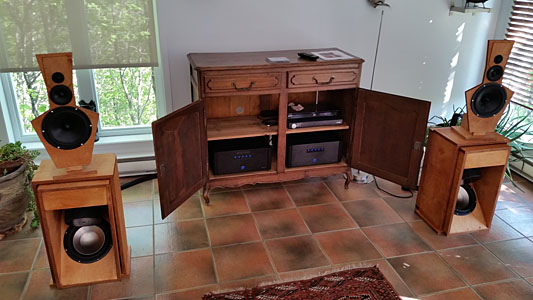 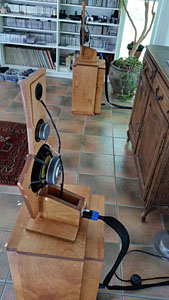 |
Hello,
These are the set I built for my dad. They replace LXmini, then LXmini
with Dave's subs incorporated in the base. The room is quite big and
bright yet the LX521.4 illuminate the whole room with music at levels that
the LXmini could not match. Two Emotiva XPA-5's are driving the speakers.
The gains of realism are most noticeable on symphonic music. The speakers
vanish and project a clear phantom image over a wide area.
Thank you for making this design a valable to the DIYer.
JP Schroeder (Canada) |
**************************************************************************************************************************************************************
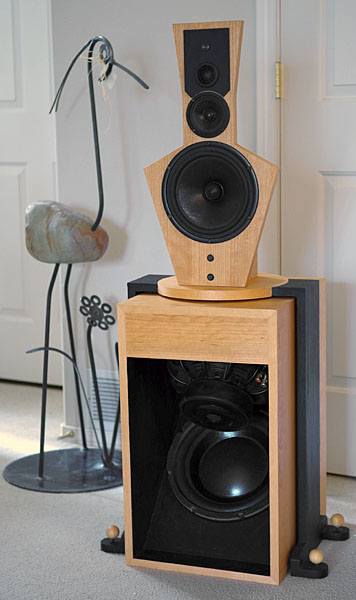 |
MikeC (mac on OPLUG),
(USA, WA) |
**************************************************************************************************************************************************************
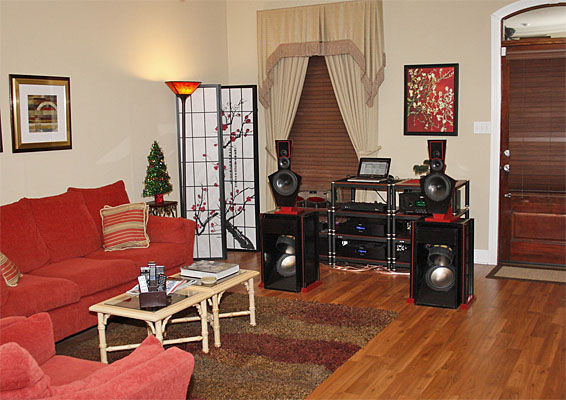 |
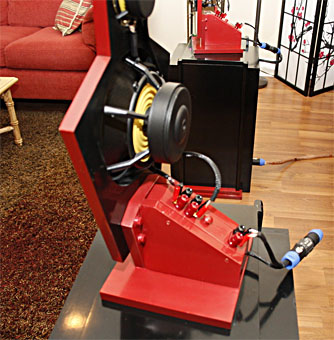 |
| John Guillory (USA, MS) |
|
***************************************************************************************************************************************************************
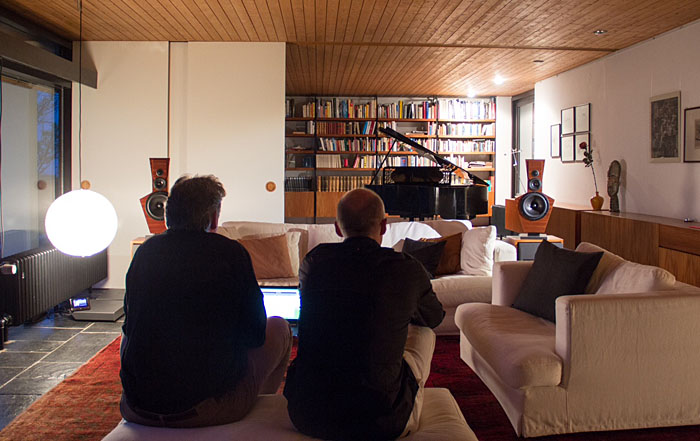 |
Lieber Siegfried,
Look here, Frank and I truly had a nice time when he came for a visit.
Looks like the speaker system was part of the room :-)
Thank you! Sebastian (Germany) |
***************************************************************************************************************************************************************
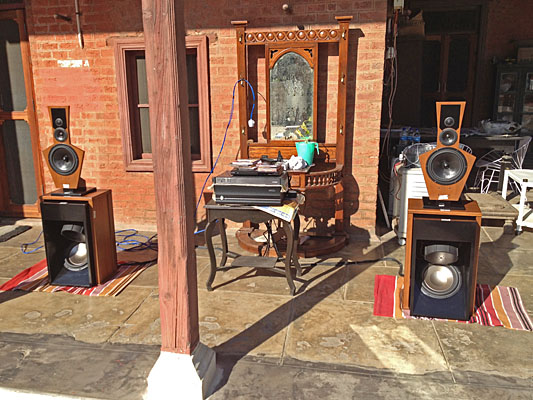 |
Hello Mr Linkwitz,
I finally have put together possibly the
first set of LX 521s in India, and write to thank you for giving me the
opportunity to enjoy audio in ways I had not imagined earlier. It was
both, humbling and exhilarating, at the same time.
Currently the system is powered by a Sherbourn 12 – 45 amplifier, and I
have used the MiniDSP 10X10. Input Sources are iPAD, Cambridge Audio CD
player, and a Sony DVD player,
The LX 521s have been assembled in a small village in North India (www.garli.in),
and will subsequently be transported to our Urban House in the near
future.
Enclosing some photographs for your records. It’s a temporary placement.
The stickers on the baffles have been put to enable reassembly for
transport. I will send you more photos when the LX 521 reach their final
destination.
Thank you once again, for sharing this exceptional audio experience with
us, and we will fondly remember you every time we listen to the LX 521s.
Regards, Atul Lal |
**************************************************************************************************************************************************************
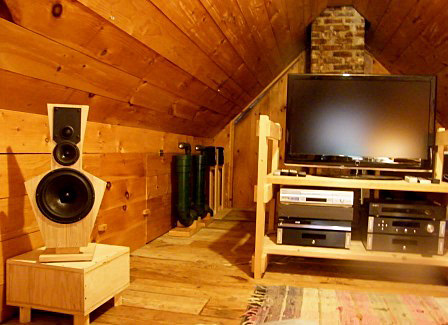 |
"...As for
myself, well, I do not require a very large room, as you can plainly
see." --Tyrion Lannister to innkeeper, in George R.R. Martin: A Game
of Thrones
That said, it probably doesn't hurt the
sound of "LX-Tyrion" that, although it's hemmed in on every
other side, the distance to the wall behind it is 10 feet.
As for the issue of a monopole bass unit
combined with a dipole top, Pluto Plus sounds to me no worse with the
LX521 upper baffle than it did with Pluto, and that was just great!
All in all the sound is amazing. I doubt
I'll ever hear anything better than this, even considering the far less
than ideal space. Thank you again, SL.
"Paul Wooferwitz," New Hampshire |
***************************************************************************************************************************************************************
Ruediger Rauskolb, Spain - LX521 tops on
stands and with sealed box woofers in the room corners -
"Genau, die
beiden kleinen schwarzen. Mit jeweils zwei 5 inch drivers von
Pluto. Dazu habe ich die Linkwitz transform im zweiten Chassis untergebracht,
oberhalb des ASP. Die Verstärker sind drei A500 von Beringer. Geht runter bis
25Hz. Lyngdorf RP1 macht den Rest (Dirac Live)."
A call for an
open source
loudspeaker project
**************************************************************************************************************************************************************
After a long saga, which involved adding to my
woodwork skills by adding hammer veneering with hot hide glue and French
polishing, I am delighted to have finally finished the LX521 build!
I attach some photos; alas I cannot listen to them until I have finished
building the power amps (don’t ask…).
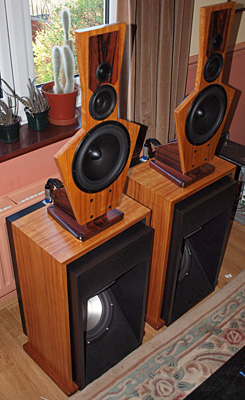
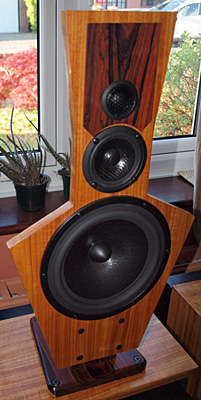 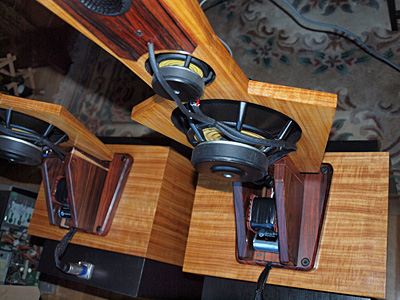
I have no idea what the type of veneer is – I
bought a massive job lot, and picked one that looked like it would work. The
tweeter sub baffles and the baffle support are from Cocobolo (a type of
rosewood). There is no polish applied to these parts – they are just
progressively finished to 1000 grit, which gives them a mirror level of polish.
The bridge feet are made from Goncalo Alves.
Craig (UK)
*************************************************************************************************************************************************************
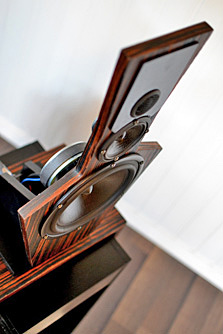
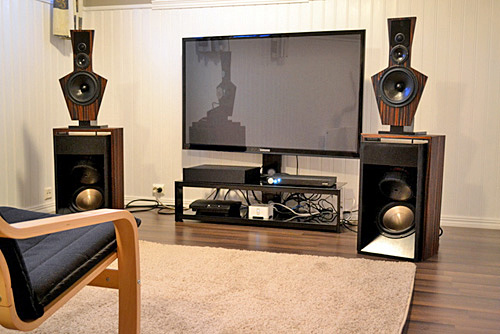
After a lot of hard work I recently finished my
LX521s. I run them with a miniDSP 4x10HD and an amplifier fitted with Anaview
class-d modules. I used the kit from Madisound as a basis and made some parts
myself.
I am very satisfied with the result. The sound
quality from these speakers is very special and they are one of the very best
speakers I have heard, if not the best.
There is a swiftness and lack of decay to the sound that is very compelling. The
bass is also very textured and clean.
Highly recommended!
*****************************************************************************************************************************************************************
 |
8 April 2014
Peter Aczel reviews
the LX521 Reference Loudspeaker |
*****************************************************************************************************************************************************************
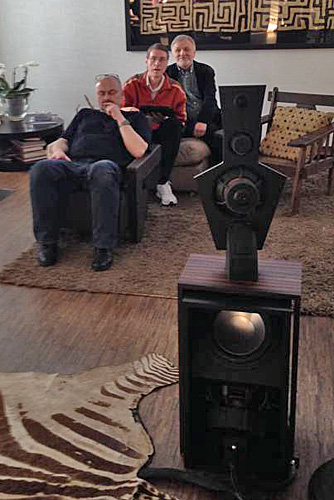 |
Excerpts from the German website:
HiFi Museum - Wiesbaden
Neuigkeiten / News
Feb. 2014 - Ein Hör-Erlebnis in Stuttgart
Eigentlich wollte ich hier nur von "alten
Sachen" erzählen und die Vergangenheit dokumentieren. Doch im
Hinblick auf mein Erlebnis mit der verklärten Wahrheit der Erinnerung,
inzwischen zigfach wiederholt, möchte ich von einem ganz aktuellen (positiven)
Erlebnis berichten, das zu diesem Thema paßt. More
...
Eine beeindruckende Natürlichkeit
Die über einen LINN Wandler vom Audio-Server
gespielten Musikstücke sind sehr beeindruckend. Mit den richtigen
Verstärkern geht es erstaunlich laut, fast schon zu laut. Aber das
alles können andere (große) Boxen auch, vielleicht sogar genauso gut.
Beeindruckend ist die Räumlichkeit, die diese Lautsprecher "fabrizieren".
Da diese Lautsprecher mitten im Raum stehen, wird der plastische
Eindruck auch nicht von der (eigenen) Psyche ausgebremst - wie vor einer
Wand, bei der die Musiker und Instrumente unnatürlich "von hinter
der Wand heraus" spielten.
Das musikalische Geschehen spielt sich im wahrsten
Sinne des Wortes um die beiden Lautsprecher ringsherum ab. Die
Instrumente stehen (virtuell) teils vor den Boxen, teils sogar links und
rechts daneben, natürlich auch dazwischen und weiter hinter den Boxen
im physikalisch und psychisch vorhandenen Raum. More
... |
*****************************************************************************************************************************************************************
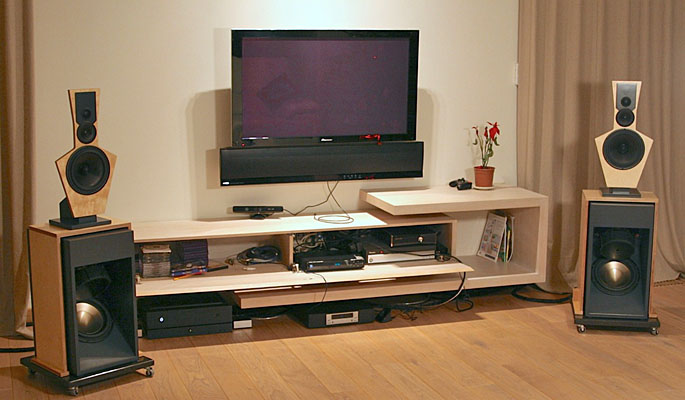 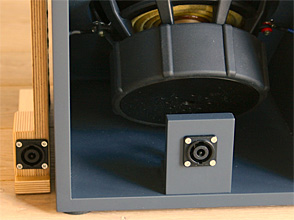
Dear Siegfried,
I have just completed building my pair of LX521.
I have purchased plans and flat kits from Frank, I have also ordered from him
ASP, the „select" version (with capacitors up to 0.5% tolerances).
My idea was to make the whole setup as much
flexible as possible, that is why I have introduced some changes:
1. I have moved passive XOs to the separate small boxes placed by the ASP (it
allows me to experiment with 4 way setup in the future by just playing with
plugs not wires).
2. The above required building (braiding) new cables e.g. 10 wires (4 x 4mm2 for
woofers and 6 x 2.5 mm2) ended with two speakon connectors at the speaker side.
3. I have built 10 channel amp with Hypex modules (10xUDC180HG with HxR + 4x
SMPS400 + Softstart module). I have used non-regulated DC output of SMPS400
modules to power ASP in dual mono fashion. Additionally I have added IR remote
control ON/OFF operation to the amp, so I can switch on and of the whole setup
with my universal Logitech RC.
4. I have added Sjostrom SSR01/SSR02 super-regulators to the ASP in the way that
the whole box of ASP is only 4 cm tall :), the amp is slim as well.
Finally everything works very well, the sound is
very good. In my opinion especially the bass side is at reference level. Thank
you very much for the project and for making it available!
Best regards and Happy New Year!
Marcin S. (Poland)
*****************************************************************************************************************************************************************
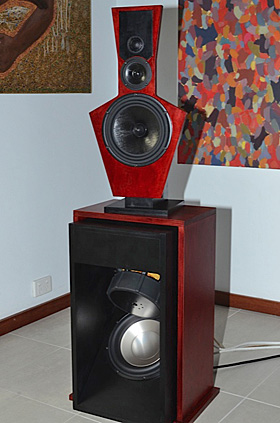
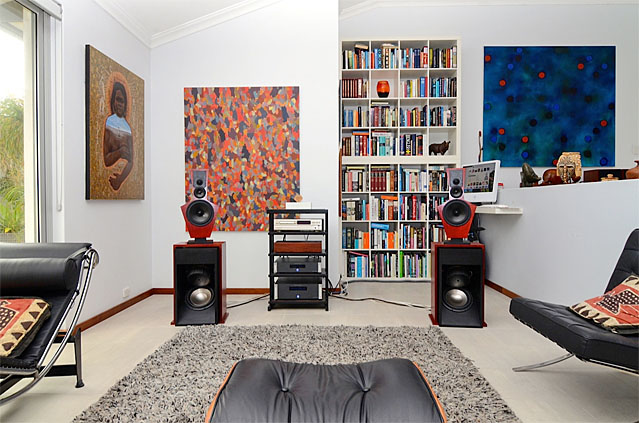
Dear Mr. Linkwitz,
After learning a great deal from your website (and in the process unlearning
what I thought I had previously known) I decided to build your
LX521s.
I went with Frank Brenner's excellent Magic LX521 kit which was easy to
build. I am now breaking in my ears and brain on the LX521s running
from Davey's 4-way DSP solution. I am new to dipole but suffice to say
that my sons and I have been blown away by a quality of sound, particularly
bass, that we have not heard before. Everything I have read about the
wide sound stage and imaging is true, but coming from boxes it is the
clarity and detail in the full spectrum of the audible frequency range of the
LX521s which is revelatory. I also have quickly learnt that some of the albums I
previously thought were pretty good are actually seriously compromised. These
speakers are ruthless in exposing poor recordings and excessive
compression.
Thank you very much and please feel free to publish my remarks and photos if
you wish. Hylton Q, (Australia)
*****************************************************************************************************************************************************************
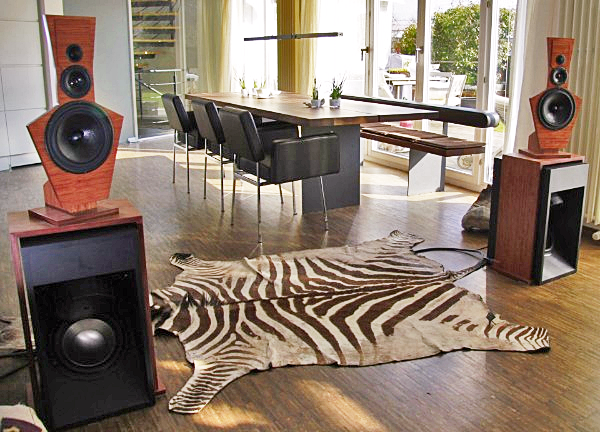
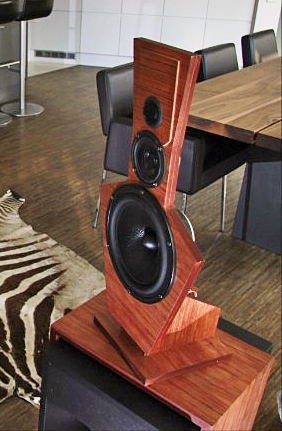
Dr. Frank Brenner, Germany, (Bubinga wood), www.LINKWITZ.store
*****************************************************************************************************************************************************************
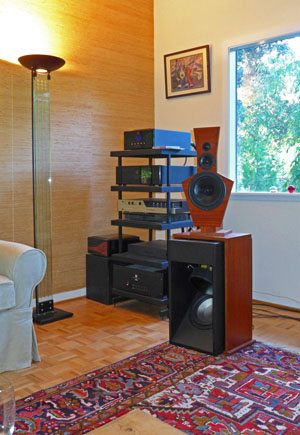
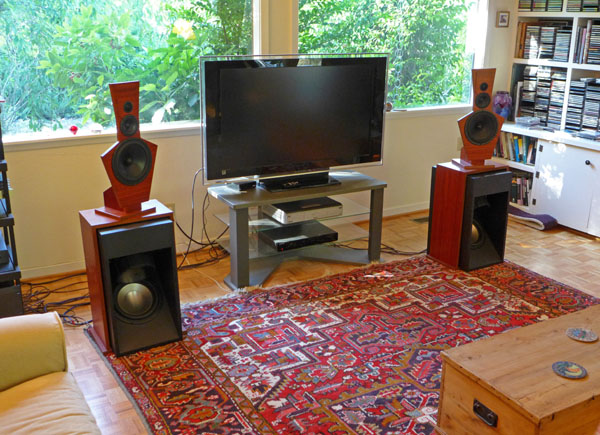
John Field, California
Construction: Partially assembled cabinets by www.LINKWITZ.store (Paduck
wood)
*****************************************************************************************************************************************************************
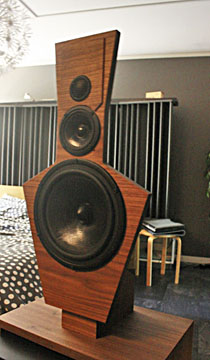 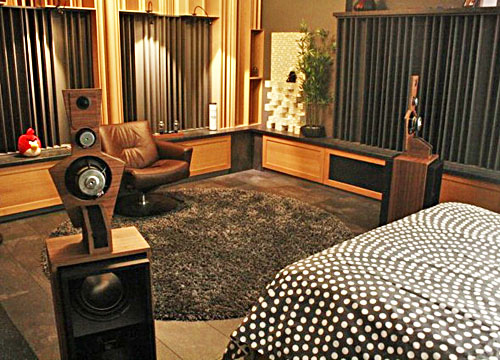 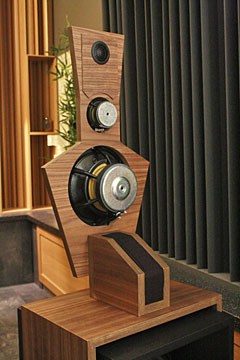
Mikael Karlsson, Sweden
"I have been pleased with ORION for over 10 years.
This is a worthy successor. Great speakers!"
Construction: Partially assembled cabinets by www.LINKWITZ.store
(American Walnut, slim baffle support)
Swedes interested in LX521 can contact me, if they want to listen (northern part
of Sweden) contact.micke (at) gmail.com
*****************************************************************************************************************************************************************
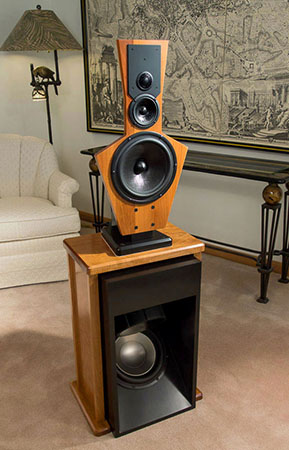 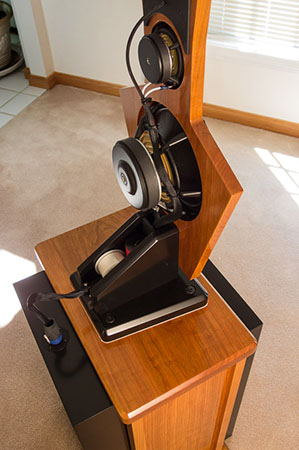 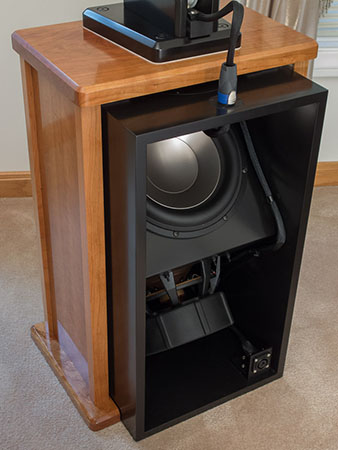
Bill Schneider, Ohio
"Thanks for making these designs available. They are
superb, and affordable."
Construction
notes, LX521
now playing in SE Ohio
*****************************************************************************************************************************************
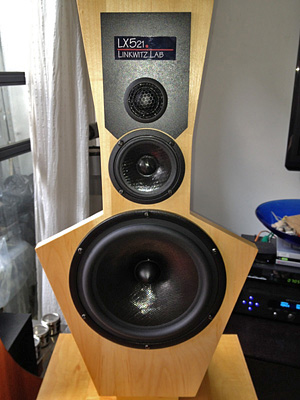 |
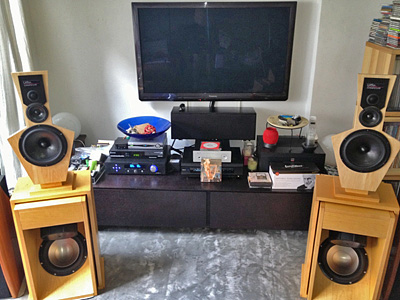 |
"Well, after a good amount of careful
effort I have to thank you for another wonderful design and well put
together construction detail. It has been a pleasure to build and even
more satisfying to know that its all working as per the build plans. It
has a good deal more seamless transition in the lower mids than the
Orion's and over time I am sure I will have more to say on the matter of
smaller spaces for which I am unfortunately restricted by."
Paul in Singapore
LX521 build log |
****************************************************************************************************************************************
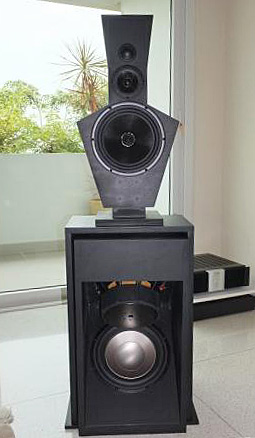 |
Thank you for another
superlative design. The tonal neutrality of the LX521 is
astounding and it interacts with the room even less than the Orion.
A real masterpiece. You should be very proud.
Gratefully yours from Singapore
Steven Hill
Contact
Steven Hill if
you would like to audition his LX521.4 or LXmini in Singapore
|
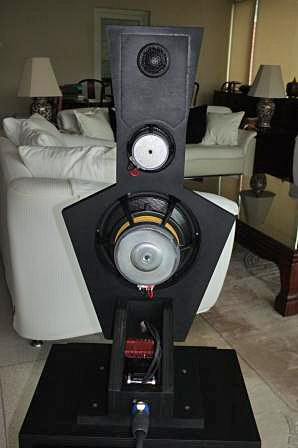 |
******************************************************************************************************************************************
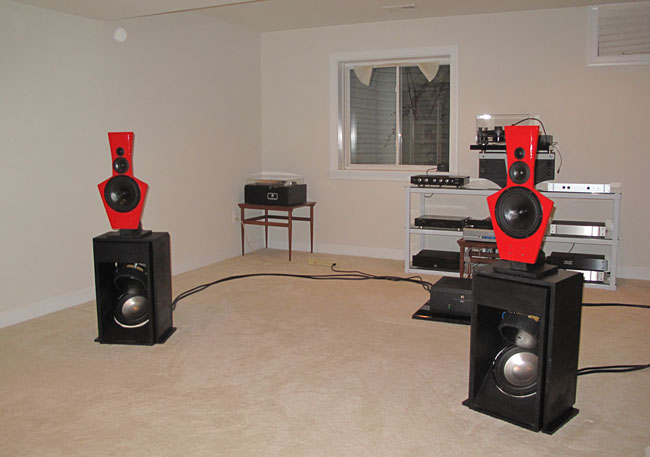 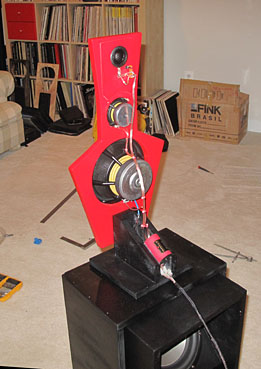
LX521 "Singing in Annapolis" -- the first pair in North America
(after Siegfried's Prototype)
A truly remarkable loudspeaker that leaves SL's other designs (far) behind in
terms of resolution and sheer musicality. I am hearing all sorts of
"new" things in my favorite recordings -- in short, a God send ....
Charles Port
c p o r t @ r a w b w . c o m
https://resfreq.com/linkwitzlx521.html
***********************************************************************************************************************************************************
On 1/6/2013 3:00 AM, Dr Frank Brenner wrote:
Sehr geehrter Siegfried Linkwitz,
die neuen LX521 spielen nun schon einige Tage bei uns und haben die
Orion 3.4 mehr als ersetzt. Ein echter Genuss. Vielen Dank!
Mit besten Grüßen aus Stuttgart,
Frank Brenner
(He offers a flat-pack of wood parts for
assembling the LX521 without sawing or drilling at www.LINKWITZ.store).
**********************************************************************************************************
LX521/2
running - on the ORION/PLUTO/LX521 Users Group
**********************************************************************************************************
New Linkwitz "LX521" speakers - on the
Multi-Way pages of the diyAudio Forum
**********************************************************************************************************
LX521
reports (other forum threads) - on the ORION/PLUTO/LX521 Users Group
**********************************************************************************************************
LX521 revisited - Parts Express Tech Talk Forum
Got to visit the LX521 on their “native turf” for a couple hours
Sunday (my first visit to their “place of birth"), and to
listen on them to some very familiar (and somewhat flawed) recordings
that I heard up close and personal both in rehearsal and in
performance. Since I was primarily interested in further evaluating
the new midrange I took a soprano aria (Christina Major singing Ruhe
Sanft, Midsummer Mozart Festival) and the Serenade #10 for winds (Gran
Partita, also Midsummer Mozart). SL then played a couple “studio
mixed” recordings that highlighted issues of “phantom image”
formation (more about that later).
First, about the lower midrange bump (I previously described it as
“forward sounding”) that I noted at BurningAmp. It is entirely
absent in SL’s listening room, and as I speculated before it is now
clearly an artifact of the space at Ft. Mason. No speaker can be
completely immune to the room. In SL’s room (which is itself
relatively “live” and reflective) overall balance and “timbre”
are as good as it gets. There was simply nothing wrong with the
reproduction of the various winds in the Partita.
Second, regarding issues of the midrange crossover and driver
integration . . . I had heard no problem with that at BurningAmp, but
it has been suggested that there might be some, and that, more than
anything else, is what I went to listen for. Put it to rest, there is
no “problem”. The lower and upper mids sound like one driver, and
there is not the slightest hint otherwise. And, to answer your next
question, it’s one very good driver indeed . . . every bit the match
for ORION’s W22 in the lower midrange and Millennium in the upper,
but without the oft discussed issues those two have around crossover.
The higher order crossover that is simply a necessity with the drivers
in ORION is not needed with the LX521 drivers . . . whether the
increased phase shift of a higher order crossover can be heard or
influences “image formation” is here moot, since it is not
necessary. This makes putting the passive (first order) crossover
between the two midrange drivers the obvious, and correct, choice with
these drivers.
But back to “imaging” and the “auditory scene” . . . that’s
more a “mixed bag”, not because of any LX521 problem but because
they ruthlessly expose problems in the recording. When it’s
there it’s there, when it’s not it’s not. These are rightly
called “monitors”, and they will embarrass many a recording
engineer who might listen to his previous work product on them (even
though it might not be entirely his fault . . . there are unavoidable
“issues” with two-channel stereo). The female vocalist in one of
the clearly mixed-and-pan-potted recordings SL played was
“present” as a near perfect phantom when I listened centered on
axis, but fled into the speakers when I move more than a few degrees
to either side. Christi (singing the Ruhe) was less precisely located
in her actual left-of-center position, but she stayed there as I moved
around the room (that recording was straight through from a ORTF
pair). We’ve still got a lot to learn about creating stable
“auditory scenes”, and I expect the LX521 (or something like it)
will play a significant role in learning and demonstrating what it is.
I much preferred listening from the back seat (you can find pictures
of SL’s listening room at the linkwitzlab site). I don’t know
exactly what that means, or how it will translate to my room (where I
generally prefer a somewhat “further back” position with ORION as
well). For the “average listener” they (the LX521) may be almost
too ruthless in the way they “expose” a recording. For someone in
the trade, on the other hand, they should be regarded as indispensable
. . . it just doesn’t “do” to have a client demonstrate to you
on their own speakers flaws in your work that you cannot hear on your
own “studio monitors”. (Deward Hastings, 11-19-2012)
**********************************************************************************************************
First LX521 sound report from Burning Amp - on
the ORION/PLUTO/LX521 Users Group
"The listening room was
indeed not "great" [at the Burning Amp festival] (note though that SL
likes to regard all his designs as pretty much "room independent"),
and probably accounted for the only really notable issue, that as demonstrated
they were a bit too "forward" in the lower mids and sounded a bit
uneven in frequency response. That said, the imaging was astonishing, the
uniformity of response in the dipole null notably better than ORION, and overall
they sounded very good indeed. I was taken by the way, when moving into the
null, the apparent sound source moved to the (concrete) front wall.
They were head and shoulders better than anything else there (but it is
BurningAMP, not burningspeaker). If I never hear another "whizzer"
cone it will still be several too many, and I find astonishing the number of
"dipole" designs that still don't even try to be full-range-dipole.
And, as usual, what a gawd awful selection of demo music . . . if there is no
"real" original how do you know if the loudspeaker is reproducing it
correctly?
The "bridge" idea is neat . . . I may try to mod my ORION (which still
have a minor mount resonance problem) to incorporate it. And I may even at least
consider some "experimenting" with the upper baffle. But I'm not going
to take SL's (perhaps tongue-in-cheek) suggestion that I sell my ORION and build
LX521. I spoke with a couple other ORION owners there who seemed to agree. That
said, if you don't have ORION already the LX521 should bump to the top of your
"best DIY loudspeaker" list. There are some obvious
"adjustments" still to be made, and some of the design choices are not
as clear-cut as were those in ORION, but that's DIY . . . always room for
improvement . . ." (DewardH, Oct 29, 2012)
. . . . . . . . . . .
. . .
I can report that the LX521 leaves the ORION (all variants) and PLUTO
"in the dust" (sadly, perhaps, but technology marches on....). There is a clarity and
truthfulness to the midrange in the LX521 (long my pet peeve with the ORION,
which improved with each X'over iteration) that is so natural and right that it
is immediately clear we are dealing
with a different caliber of transducer. Imaging specificity and micro-dynamics in the LX521 is
significantly improved (high WOW factor) over the ORION -- hard to believe, but
true.
The loudspeaker is straight forward and simple to build (as long as you have good tools) and the
ASP is simpler than the ORION's ASP. Everything has been pared down to the
essentials -- the LX521 demonstrates "transcendental" FFF (Form
Follows Function) engineering.
It is a winner.
Charles, (cport, Jan 08, 2013)
**********************************************************************************************************
Burning Amp Sizzles in San Francisco - stereophile
**********************************************************************************************************
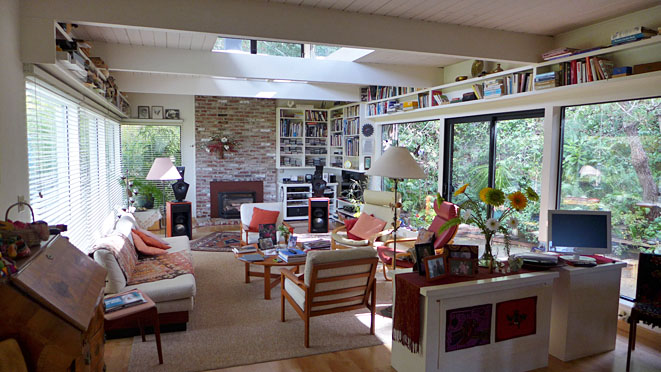 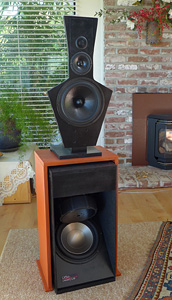
Siegfried Linkwitz, CA - Oct. 2012 - Prototype
*********************************************************************************************************************************************
|

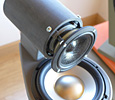










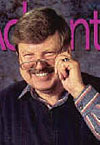





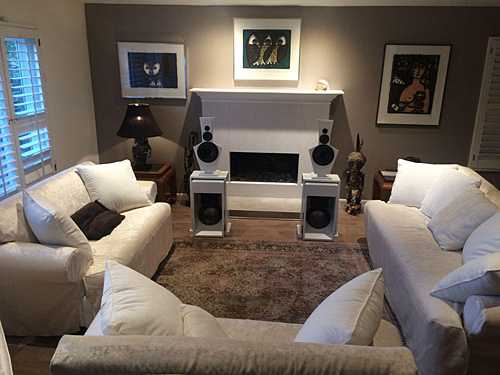
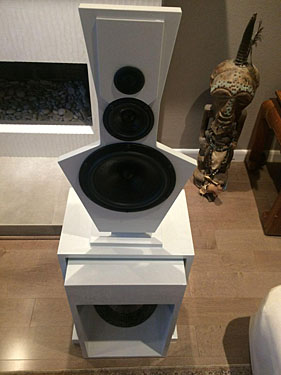
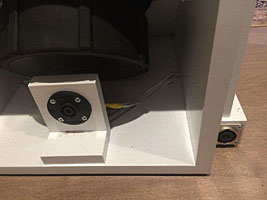
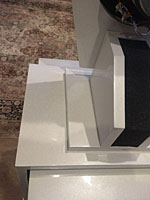
 Reimar
Bruening, CA
Reimar
Bruening, CA















